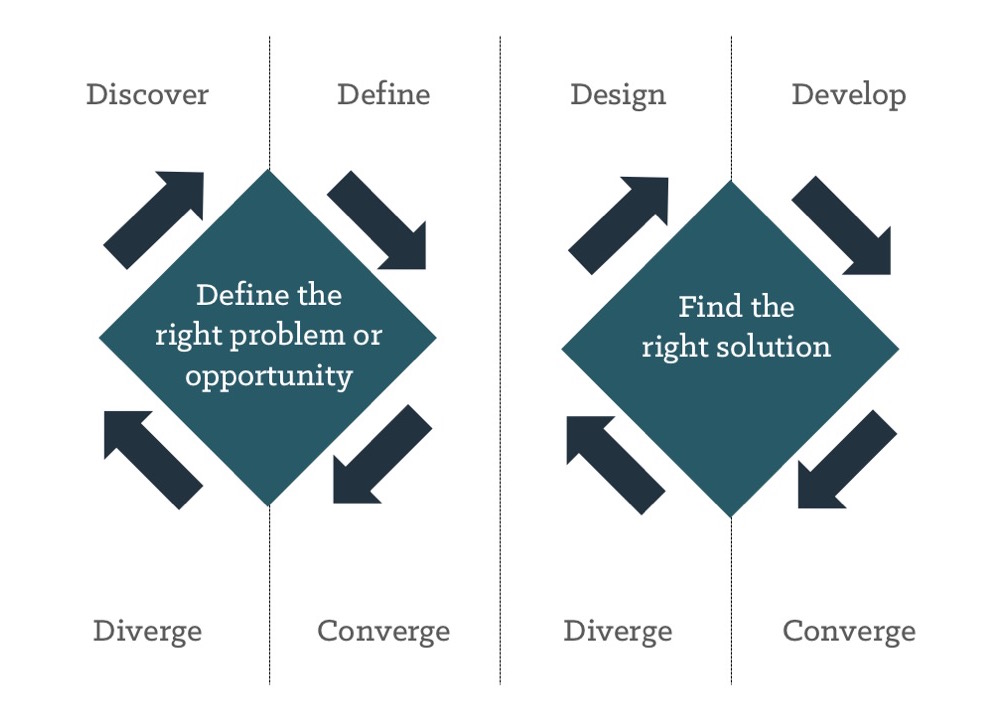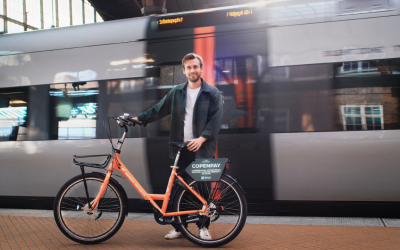The core duties of a destination marketing organization (DMO) are shifting away from promotion in the inspirational phase and toward adding value in every step of the customer journey. Since much of that value comes from stakeholders and operators, DMOs must take hold of their new roles as facilitators of change and collaboration. How can your DMO help stakeholders and operators improve your destination’s visitor experience?
DMOs can lead the way
Your DMO’s job is to develop and describe a holistic vision of the destination from the visitor’s perspective. Can you describe your place’s authentic DNA? Based on that DNA, which visitor experiences can set your destination apart? Once your DMO considers these questions, it needs to lead its stakeholders and industry toward making this vision a reality. Design thinking is one of the most successful ways to do this.
How design thinking works
Design thinking is a collaborative approach to problem solving that consists of four phases or elements. The “double diamond” is one way to visualize this.

The four phases are:
- Discover the problem or opportunity
- Define the right problem or opportunity
- Design solutions
- Develop solutions
The design thinking process is done with a multi-disciplinary team in one or more workshops. From the DMO’s receptionist to its CEO; from the hotel owner to the resident; all stakeholders have different, equally important perspectives on the visitor. Listening to all of these perspectives throughout the process will not only give you the best results, but will also greatly strengthen the buy-in from everyone involved. In the workshops, the large group is divided into several sub-groups that each work on the same problem from a slightly different angle. The complete design thinking process can last anywhere from a single day to a few months.
The four phases typically work like this, from start to finish.
1) Discover the problem or opportunity
Design thinking begins by examining a single problem or challenge prepared in advance. Prior to the first group session, the DMO writes a problem definition to use as a starting point for discussion. This begins a clear, focused process that stimulates questions and insights from participants.
The goal of this stage is to look at the initial problem from every angle and to ask as many “why” questions as possible to make sure the group is addressing the right problem. As the DMO immerses itself in the world of the problem, it will learn new perspectives from the participants that will often reveal many problems or opportunities that surround the initial question.
“Question: How many DMO employees does it take to build a new visitor centre?
Answer: Why build a new visitor centre?”
For example, perhaps the problem relates to a decrease in website traffic. Participants might help you ask whether the destination really needs a new website, or whether people have changed the way they consume information as they make travel decisions. This could reveal an opportunity to find other ways to engage potential visitors.
Once you’ve more clearly defined the right problem or opportunity, it’s time to gather data about customers’ behaviours, emotions and motivations, to find out why they do what they do in your destination. This means moving away from the traditional questionnaires and focus groups, and toward qualitative research such as observation, cultural probes and open-ended interviews. You’ll find that what people say they do is often different from what they actually do.
This discovery phase is an opportunity to learn everything you can about how your visitors behave in your destination. Gaining this understanding is an essential step before designing solutions.
2) Define the problem or opportunity
The next step in the process is data analysis. The participants agree on the most relevant data gathered and then start to interpret this data through a set of tools. The most commonly used tools are:
- Stakeholder mapping: Participants write down all stakeholders and other influencing elements that surfaced during the research phase and group them by influence. This helps define the context and environment in which the problem or opportunity exists.
- Personification: The consumer research will help you create one or more personas. These personas aren’t your typical “35- 45-year-old affluent traveler with a propensity for luxury” DMO target group, but rather embody a set of goals, motivations, beliefs and behaviours. The fictitious personas and their characteristics help identify behavioural patterns and trends in the destination and are the basis of further sessions and use of tools.
- Customer journey mapping: In this exciting step, participants map out the journey of their persona using the data gathered in the first step. Based on the persona’s previously defined goals, beliefs and motivations, they then follow the persona while it interacts with the destination and its touchpoints and stakeholders. Participants map the high and low points in the experience onto a customer journey canvas like the one created by our friends at the Design Thinking Academy.
This second phase helps the participants create a clear picture of who their visitors are and lets them see the destination from the perspective of the visitor.
3) Design solutions
As the design thinking participants map out the customer journey (which can be as macro or micro as needed), new observations will start jumping out: the visitor’s positive and negative experiences, the connections between stakeholders and new opportunities to improve the destination experience or services.
The participant groups write down these “opportunity areas” or “customer insights” and discuss them. The insights, typically found at at low points in the experience of the visitor, often point out opportunities in a wide variety of areas, such as product, experience, marketing, internal process, organization and many, many more.
Based on the identified opportunity areas (or the top three, as decided by the group), the groups then start generating as many ideas as possible to seize the opportunities. Again, there’s a wide array of tools that can help generate ideas. Whichever you choose, remember: the more ideas, the better.
In this phase, as in all of the phases, the groups present the results of their efforts to each other. This essential step fortifies the sense of ownership and brings its own, unique social pressure to do well and produce useful results. The participants now begin to see real solutions emerge from the brainstorming and research of the first two phases.
4) Develop solutions
After ideas for improvement have been prioritized using an “impact/effort” matrix, the typical design thinking group develops three selected ideas, by fleshing them out into concepts that describe value proposition, target group, customer insights, ways of measuring success and more.
From the concept, prototypes are developed. The prototypes can take many shapes and forms such as role plays, storyboards, service scenarios, software and even LEGO models. The key objective of developing prototypes is to see if the idea works and delivers the value that you expect it to deliver. If it does, you can further develop the prototype. If it doesn’t, the group returns to one or more of the previous phases.
This stage provides tangible solutions that a destination can test and put into practice.
What’s the bottom line?
Design thinking offers tools and methods to find solutions that will improve the overall path to purchase, from consumer engagement to the visitor experience.
Equally important, the participants of the sessions become deeply involved and often feel an intense ownership of the process and “their” persona and customer journey. Through collaboration and constant conversation in the groups, they begin to abandon their personal interests, stepping out of their silos to see the destination from a new, united perspective: that of the traveller.
For a DMO, having all stakeholders speak the universal language of their visitor is invaluable for actually influencing the destination experience and will work wonders for relationships with your stakeholders and also the relationships between stakeholders. With design thinking, your DMO becomes the glue that holds your destination together.
More on this topic: Design thinking for the modern DMO
Related reading: Product and Promotion – Develop what you promote and promote what you develop. Are you equipped to create experiences?









Cutting Edge Thinking, I love it, great work
Thanks Cliff! I hope it’s helpful for you, stay tuned for more on the subject 🙂